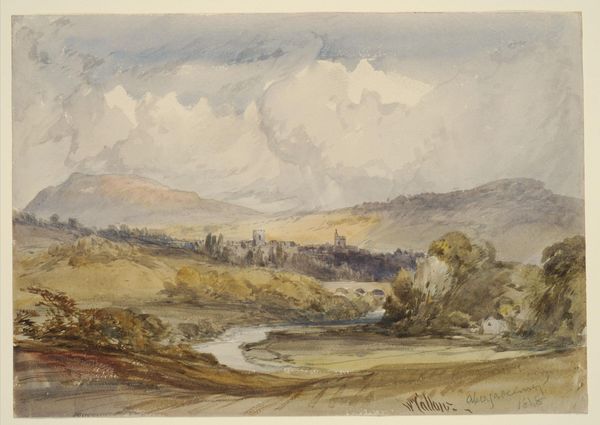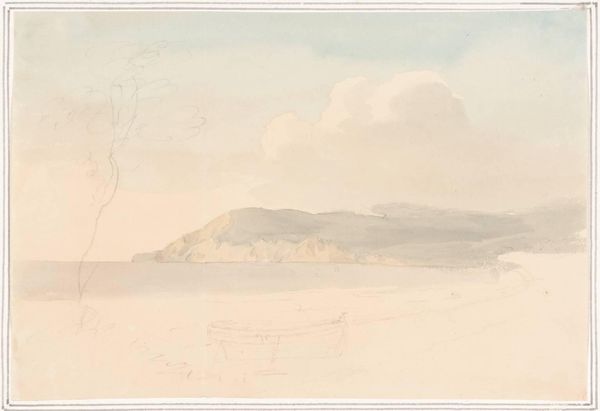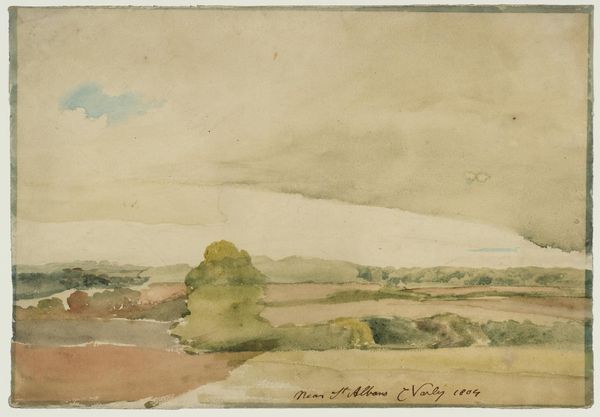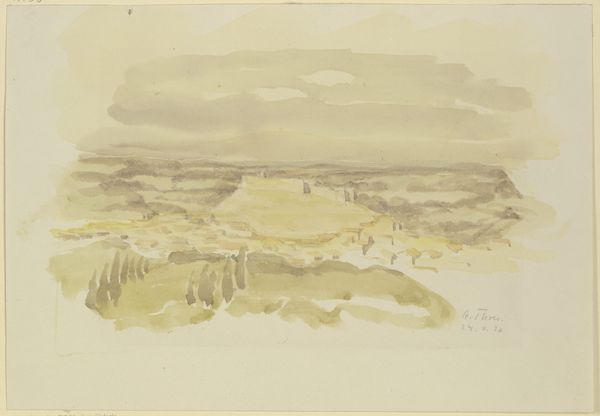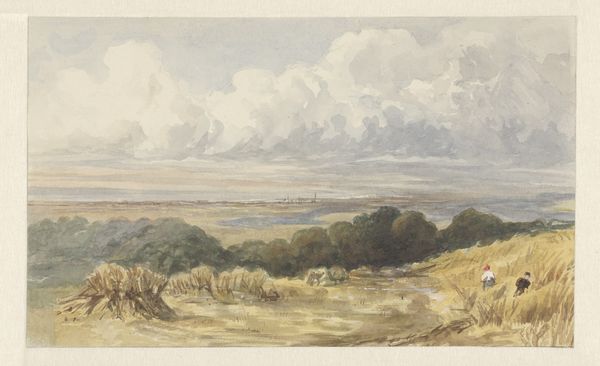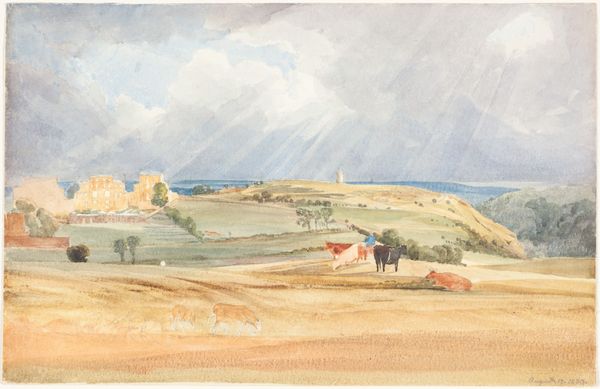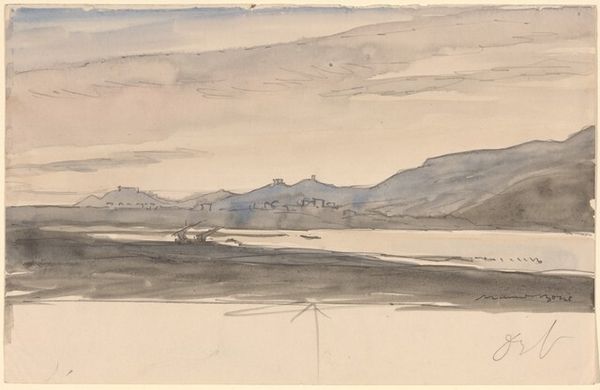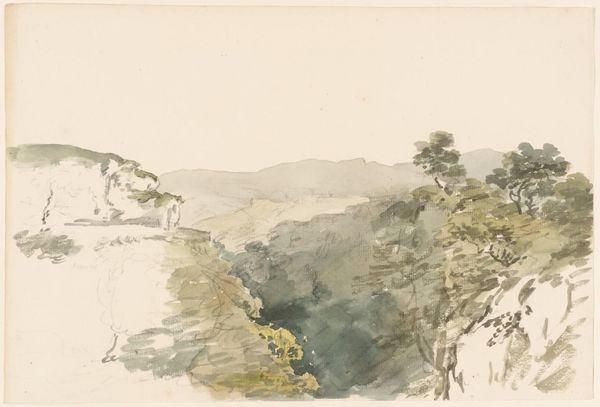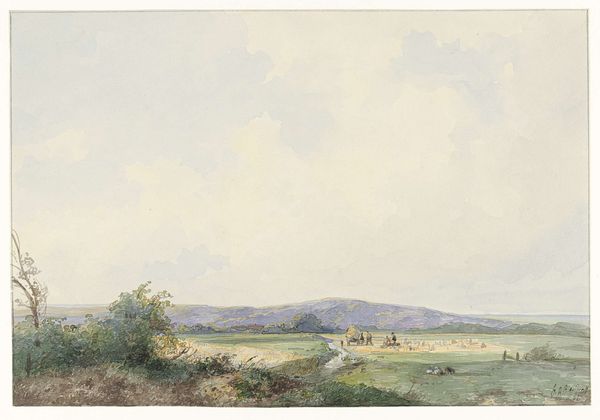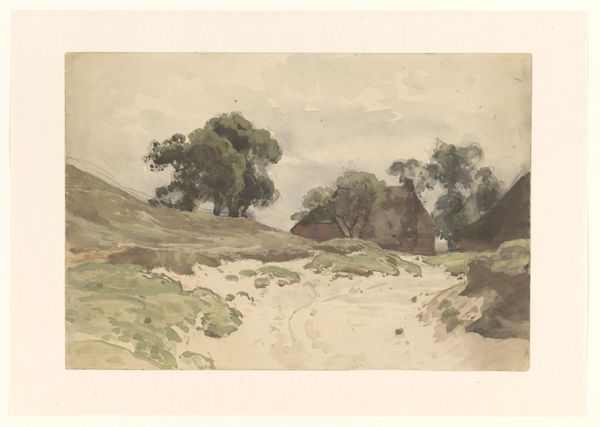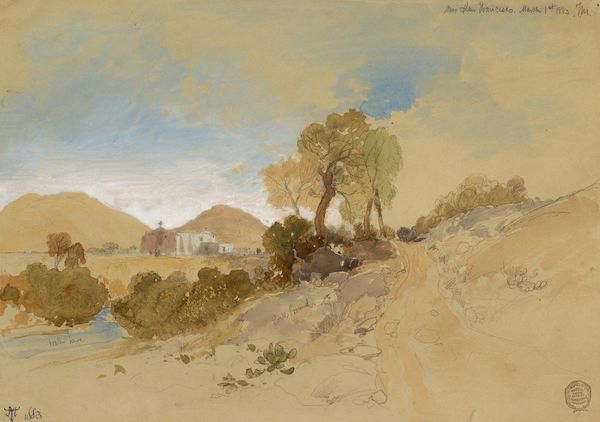
drawing, plein-air, watercolor
#
drawing
#
plein-air
#
landscape
#
watercolor
#
romanticism
#
watercolour bleed
#
watercolour illustration
#
watercolor
#
realism
Dimensions: overall: 16.8 x 26.9 cm (6 5/8 x 10 9/16 in.)
Copyright: National Gallery of Art: CC0 1.0
Curator: Here we have James Bulwer’s "Clifton from Kingsweston," a watercolour drawing created around 1830. It's quite characteristic of landscape paintings from this period. Editor: It's surprisingly muted for a landscape. There's an overall flatness to it, a wash of colour rather than anything sharply defined. The materiality speaks of quickness, like a plein-air sketch intended as study for something bigger. Curator: Precisely! This drawing captures a particular moment in British landscape art. The Romantic movement prized direct experience with nature, moving artists outdoors, in opposition to structured landscape compositions in a studio. Bulwer belonged to a circle of amateur artists, landowners who sketched as a gentlemanly pursuit, not really part of art markets as such. Editor: Amateur, yes, but observe the use of watercolor here. The layered washes, the way the pigment granulates, almost fighting the surface of the paper. The materiality pushes against the picturesque, hints at something unsettled just beneath the surface, maybe even a nod to the labour of farming this land that most gentlemen painters usually skip over.. Curator: It is interesting you focus on that labour - landscape painting, of course, also played a role in shaping national identity and concepts of the picturesque, concealing socio-economic realities beneath a veneer of idealized nature, so skipping this labour is indeed part of that. Bulwer's position as a landholder shaped his gaze as much as his technique did. Editor: Right, and you can almost sense the tensions playing out in the artwork itself - he's engaging in something picturesque while maybe acknowledging the means to do so - he has time and resources, and we do not see the workers whose labor afforded him such privilege of a peaceful plein air study. The material is honest but quiet, as expected, to allow the message not to sound to rebelious.. Curator: Well, thinking about Bulwer's social standing and the cultural context helps us appreciate how landscapes like this aren’t merely records of visual scenes, but expressions embedded in social hierarchies. Editor: I find that exploring his method helps get past the surface-level beauty of the watercolor washes, exposing the relationships to class and the labour required to make art, and perhaps a silent hint from the author as well.
Comments
No comments
Be the first to comment and join the conversation on the ultimate creative platform.
